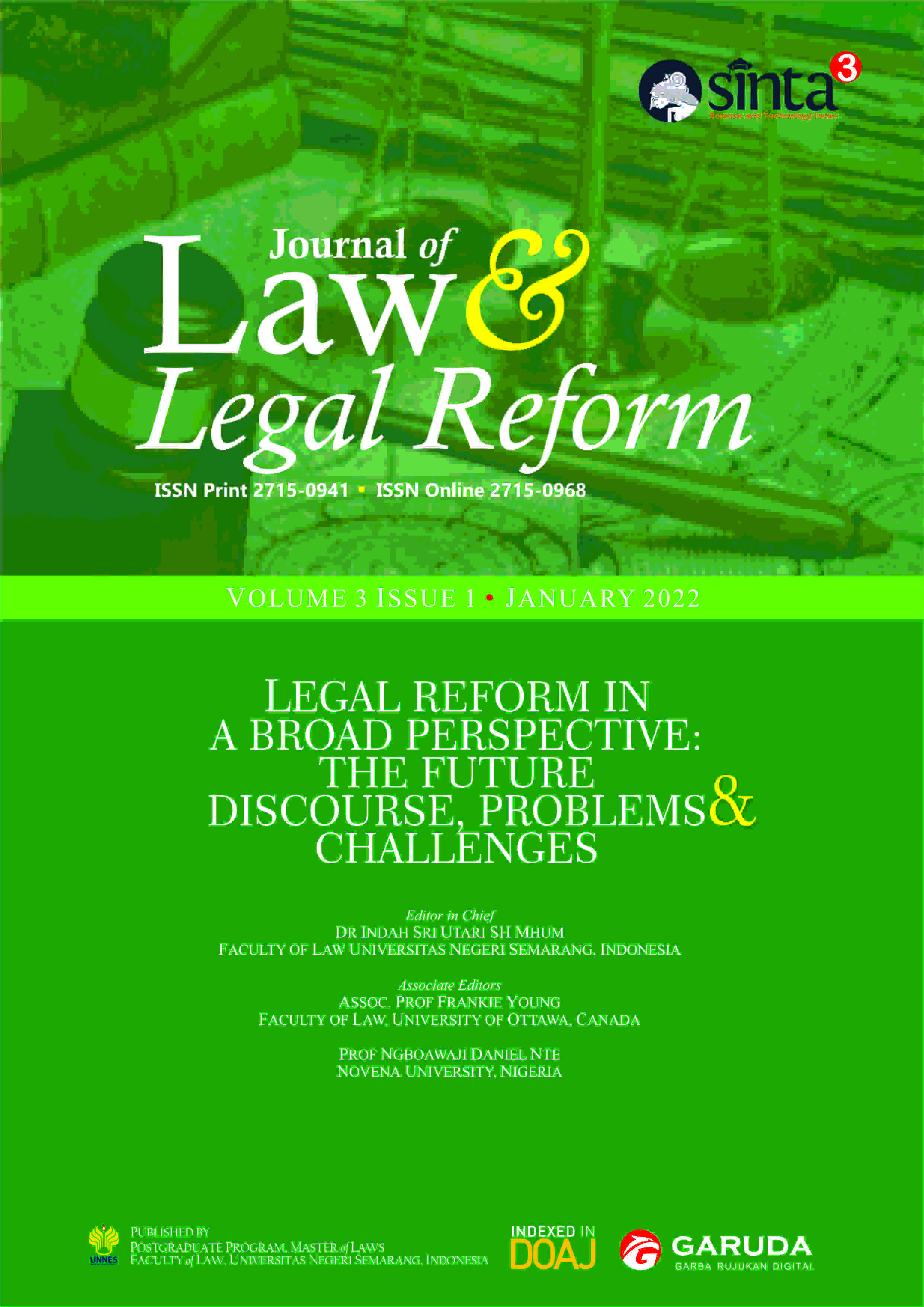Prevention of Money Laundering: Various Models, Problems and Challenges
Main Article Content
Abstract
It is well known that with money laundering activities, offender can hide the origin of money or property proceeds of crime, and thus they can enjoy and use the proceeds of the crime freely. Money laundering actors always try to avoid tracking their crime proceeds by various means, including taking advantage of the weaknesses of existing laws and regulations. Efforts to eradicate the crime of money laundering still have obstacles that cause pros and cons within the law enforcement environment itself. Are the Corruption Crimes investigators and the Prosecutor's Office able to uncover the Corruption Crime of Money Laundering that occurred and how is the investigation model for the Crime of Money Laundering able to confiscate the assets of the perpetrators in the corruption case? Until now, investigations into the crime of money laundering have not found a genuine model as a step forward in eradicating money laundering crimes. Prevention of money laundering must involve all existing components, namely the superstructure (government), infrastructure (institutions/institutions dealing with money laundering), and sub-structure (society and non-governmental institutions).
Article Details

This work is licensed under a Creative Commons Attribution-NonCommercial-ShareAlike 4.0 International License.
All writings published in this journal are personal views of the authors and do not represent the views of this journal and the author's affiliated institutions. Author(s) retain copyrights under a Creative Commons Attribution-NonCommercial-ShareAlike 4.0 International (CC BY-NC-SA 4.0).
References
Arifin, Ridwan, Indah Sri Utari, and Herry Subondo. "Upaya Pengembalian Aset Korupsi Yang Berada di Luar Negeri (Asset Recovery) Dalam Penegakan Hukum Pemberantasan Korupsi Di Indonesia." IJCLS (Indonesian Journal of Criminal Law Studies) 1 no.1 (2017): 105-137.
Asian Development Bank, Manual on Countering Money Laundering and The Financing of Terrorism, March 2003.
Financial Action Task Force on Money Laundering, Basic Facts about Money Laundering, http://www.fatfgafi.org/mlaundering-e.htm
Ganarsih, Yenti. "Illicit Enrichment." Bandung: Citra Aditya Bakti (2012).
Garnasih, Yenti. "Paradigma Baru dalam Pengaturan Anti Korupsi di Indonesia Dikaitkan dengan UNCAC 2003." Jurnal Hukum PRIORIS 2 no.3 (2016): 161-174.
Garnasih, Yenti. "Penanganan Kejahatan Aliran Dana Perbankan, Korupsi dan Pencucian Uang." Legalitas: Jurnal Hukum 4 no.1 (2017): 22-34.
Garnasih, Yenti. Penegakan Hukum Anti Pencucian Uang dan Permasalahannya di Indonesia. PT RajaGrafindo Persada, (2016).
Haris, Budi Saiful. "Penguatan alat bukti tindak pidana pencucian uang dalam perkara tindak pidana korupsi di Indonesia." Integritas: Jurnal Antikorupsi 2 no. 1 (2016): 91-112.
Harkrisnowo, Harkristuti. (2004). "Kriminalisasi Pencucian Uang (Money Laundering)." Makalah Disampaikan pada Video Conference Nasional yang diselenggarakan oleh PPATK, BI, UI, UGM, USU, UNDIP, UNAIR, dan ELIPS di Jakarta.
Husein, Yunus. "National and International Cooperation on the Prevention and Eradication of Money Laundering." Indonesian Journal of International Law 11 no.1 (2013): 1-18.
Krauskopf, Lutz. "Comments on Switzerland's insider trading, money laundering, and banking secrecy laws." Int'l Tax & Bus. Law. 9 (1991): 277.
Lyman, David. "Money Laundering." Thailand: Tilleke & Gibbins. Retrieved August 23 (1999): 2012.
Masduki, Teten. "Tiada Ruang Tanpa Korupsi”, Semarang: KP2KKN (2004).
Rajagukguk, Erman. "Rezim Anti Pencucian Uang Dan Undang-Undang Tindak Pidana Pencucian Uang." Makalah pada Lokakarya “Anti Money Laundering” Fakultas Hukum Universitas Sumatera Utara, Medan 15 (2005).
Tanya, Bernard L. Hukum, Politik, dan KKN. Jakarta: Srikandi, (2006).
Utari, Indah Sri. Menyibah Money Laundering dan Penanggulangannya. Semarang: CV Sarnu Untung. (2017).
Yusuf, Y. "Penerapan Sistem Pembuktian Terbalik Untuk Kasus Korupsi: Kajian Antara Hukum Positif dan Hukum Islam." Epistemé: Jurnal Pengembangan Ilmu Keislaman 8 no.1 (2013): 207-233.
